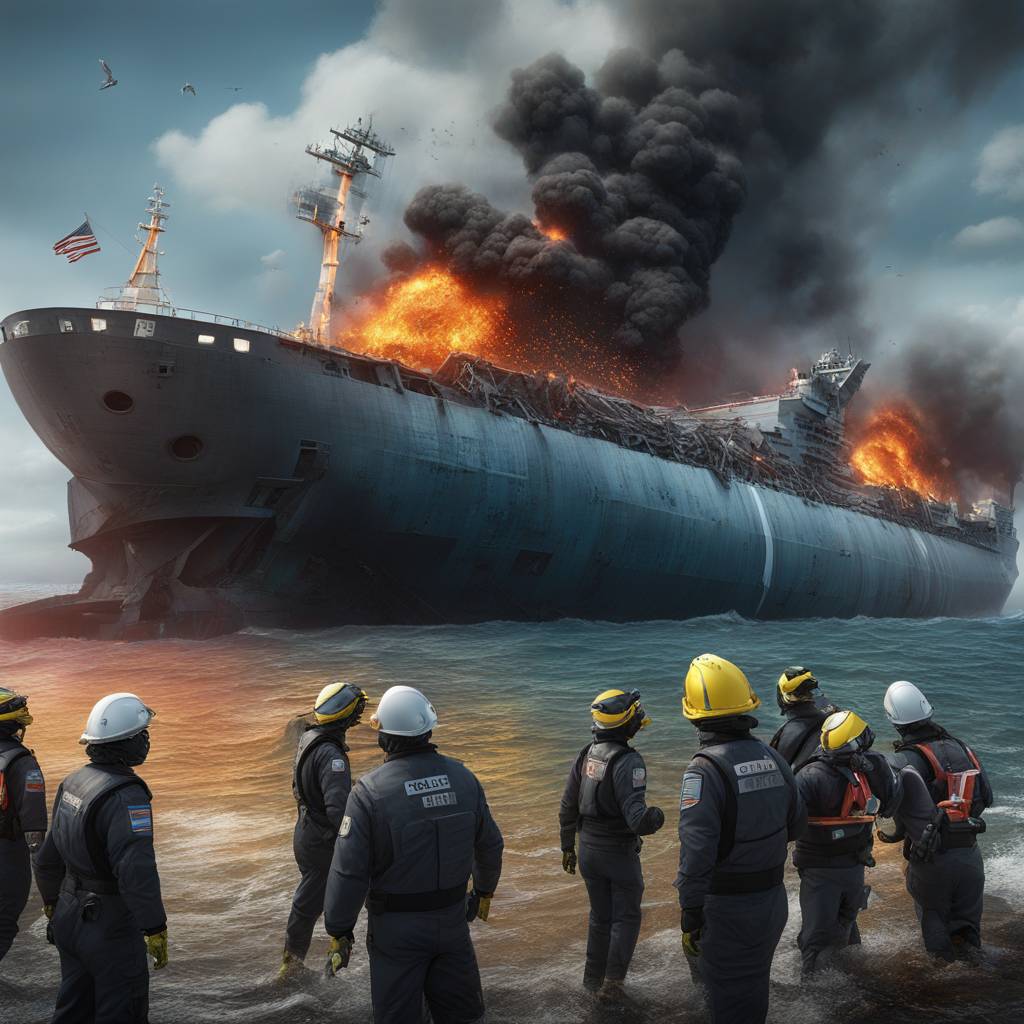A ship carrying 764 tons of hazardous materials crashed into the Francis Scott Key Bridge in Baltimore this week, causing concern about pollution and safety. The U.S. Coast Guard stated that there is no immediate threat to the public from the hazardous materials, although an environmental conservation group in Baltimore urged the public to report any unusual sightings in the water near the ship. Federal officials confirmed that there were 56 containers of hazardous materials among the 4,700 the ship was carrying, however, two containers that fell into the water were missing, but did not contain hazardous materials according to the Coast Guard.
The National Transportation Safety Board reported that the ship was carrying both corrosive and flammable materials, leading to a sheen being spotted near the wreckage on the Patapsco River. Coast Guard Vice Adm. Peter Gautier reassured the public that the materials in the damaged containers are mainly mineral oils classified as hazardous but do not pose a threat to public safety in this specific incident. Blue Water Baltimore, a conservation group, has been in communication with the state’s environmental agency and asked the public to report any unusual smells, discoloration of the water, or dead fish near the ship.
Efforts are being made to address the situation, with the ship’s operator working on a plan to move the vessel that is partially trapped under the fallen bridge, and barges on their way to start removing pieces of the bridge from the water. This will enable divers to return to the area and search for the remaining four victims, as two victims were discovered dead in a submerged pickup truck on Wednesday. The Coast Guard has taken swift action to board the vessel and has teams on site monitoring the situation closely.
The U.S. Environmental Protection Agency confirmed that there are no drinking water intakes near the area of the crash, making drinking water safety not an immediate concern. The Coast Guard stated that the hazardous materials do not pose a threat to the public, providing some relief to residents in the vicinity. While some containers of hazardous materials were damaged in the crash, the Coast Guard moved quickly to assess the situation and respond accordingly to prevent any further harm.
The Coast Guard is actively monitoring the situation and keeping a close watch on any potential pollution or safety risks that may arise from the crash. They have teams on board the vessel and have coordinated efforts with local and state agencies to address any concerns promptly. The environmental conservation group, Blue Water Baltimore, has also been active in communicating with authorities and urging the public to report any concerning observations in the water near the ship. With ongoing efforts to clear the wreckage and locate the remaining victims, the response to this incident is ongoing and priority is being given to ensuring public safety and environmental protection.
Although the crash raised fears about pollution and safety due to the hazardous materials on board the ship, authorities have reassured the public that there is no immediate threat to drinking water safety or public health. The Coast Guard’s swift response in boarding the vessel and implementing measures to address any potential risks has been crucial in managing the situation effectively. With efforts underway to move the ship and clear the debris from the water, the focus remains on locating the remaining victims and ensuring the safety of the community. Collaboration between federal, state, and local agencies, as well as environmental groups, is key in ensuring a coordinated and efficient response to this incident.








